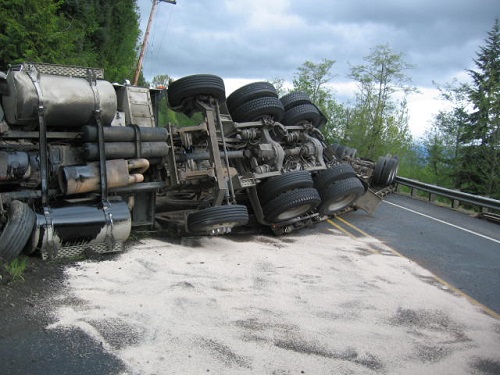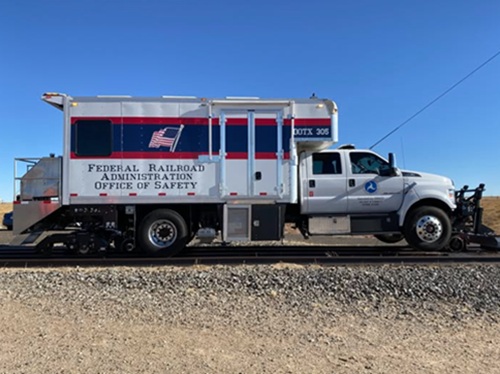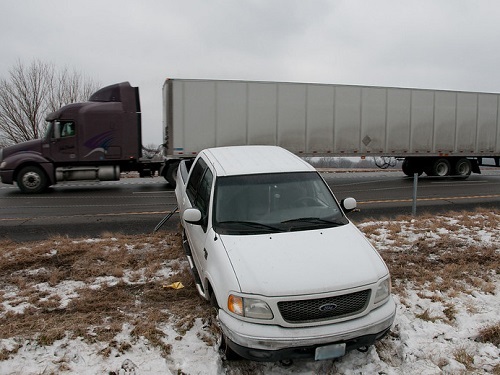The National Academies of Sciences, Engineering, and Medicine or NASEM recently issued a new report that seeks to eliminate “significant gaps and shortcomings” in current transportation policies in order to reduce U.S. roadway deaths and injuries.
[Above photo by Missouri DOT]
That report – entitled “Tackling the Road Safety Crisis: Saving Lives Through Research and Action” – offers a “coordinated set” of actions intended to achieve more “impactful outcomes” that can be sustained over time. With the “right changes in strategy,” the report states that evidence-based research on road safety can be translated into practice and that the U.S. can make meaningful advances in reducing traffic fatalities and injuries.

[Editor’s note: The American Association of State Highway and Transportation Officials is holding its 2024 Safety Summit and Peer Exchange October 15-17 in Houston, with roadway safety a major focal point. To find out more about the summit’s agenda, click here. To register for the summit, click here.]
The NASEM report also urges the U.S. Department of Transportation to exercise leadership in rallying the many parties across the country that are integral to road safety practice, the research enterprise, and the implementation of research results in the field.
As part of these efforts, the report urges USDOT to establish a “coordinated, data-driven national road safety research strategy” across all federally funded safety programs. “Persistent gaps in research in relation to national crash outcomes is indicative of the lack of national-level guidance in road safety research planning and programming,” the report noted, which is why it calls for “systematic research” to confirm the validity of safety guidance for practitioners, while eliminating “outdated and unproven guidance.”
Among other recommendations, the report also calls on USDOT to create a “National Road Safety Research Center” to both raise the general profile of U.S. road safety efforts and to efficiently support the technical resources, guidance, tools, research products, and skilled workforce needed to make early and sustained progress in the quest for zero deaths and injuries from traffic-related crashes.
Meanwhile, initial estimates released by the National Highway Traffic Safety Administration in early September indicate traffic fatalities declined over the first half of 2024 compared to the first half of 2023, with the traffic fatalities now down for nine quarters in a row.

The agency said an estimated 18,720 people died in motor vehicle traffic crashes over the first half of 2024, a decrease of about 3.2 percent as compared to 19,330 fatalities in the first half of 2023. NHTSA also estimated fatalities decreased in 31 states and Puerto Rico, remained unchanged in one state, and increased in 18 states and the District of Columbia.
Concurrently, preliminary data reported by the Federal Highway Administration indicates vehicle miles traveled or VMT in the first half of 2024 increased by about 13.1 billion miles, or roughly 0.8 percent more compared to the same time period in 2023. More miles driven combined with fewer traffic deaths resulted in a fatality rate of 1.17 fatalities per 100 million VMT, down from the rate of 1.21 fatalities per 100 million VMT in the first half of 2023.
State departments of transportation across the country have been engaged in a number public outreach efforts to try and reduce traffic fatalities during 2024.
In mid-July, Montana Governor Greg Gianforte (R) and Troy Andersen – a Montana native who plays linebacker for the Atlanta Falcons – joined Chris Dorrington, the new director of the Montana Department of Transportation (MDT), to help launch the agency’s latest traffic safety campaign, “Engage Montana.”
“While MDT can engineer safe roads through road design, we can’t always ensure that our loved ones make it home safely,” Gov. Gianforte said. “That’s what ‘Engage Montana’ is all about. This whole program is to encourage drivers to engage in better behavior, to be safer out there, so they can all get home or get wherever they’re going safely.”
Meanwhile, the Wisconsin Department of Transportation held a “Safer Together – Summer Safety Event” this summer that featured children’s activities, educational booths, and demonstrations to give attendees a first-hand look at the agency’s safety initiatives across all modes of transportation.
The event is part of Wisconsin DOT’s “Safety-First Initiative,” which brings together subject matter experts from across all of the agency’s divisions to share knowledge, best practices, and research in order to leverage new technologies for data gathering and engineering countermeasures.
Concurrently, northeastern and southeastern state DOTs recently joined forces as part of regional anti-speeding and driver behavior improvement campaigns aimed at making broad improvements to road safety.

The Connecticut Department of Transportation joined their counterparts from Maine, Massachusetts, New Hampshire, Rhode Island, and Vermont to support the “Slow Down New England” initiative; an anti-speeding enforcement effort to raise awareness and change dangerous driver behavior.
“We are thankful for our regional partners for supporting our shared mission to raise awareness of the dangers of speeding to keep all New England residents safe,” said Garrett Eucalitto, commissioner for the Connecticut DOT and current president of AASHTO, in a statement.
The Florida Department of Transportation joined a similar campaign with multiple states in the southeast – Alabama, Georgia, South Carolina, and Tennessee – to reduce the number of speed-related crashes across the region and, ultimately, bring the number of traffic fatalities down to zero.
“Operation Southern Slow Down represents our collective vision towards creating a safer, fatality-free future on our roadways – one that goes beyond our engineering countermeasures and addresses the driver behaviors, like speeding, that place all road users at risk,” said Jared Perdue, Florida DOT secretary, in a statement.
“We are proud to partner with Florida’s law enforcement agencies, as well as our neighboring states, to remind motorists that their actions have real, life-changing consequences and that we all play a role in creating a safer driving environment for everyone,” he said.
 Top Stories
Top Stories
State DOTs Making Preparations for Wintertime Operations
December 12, 2025 Top Stories
Top Stories

